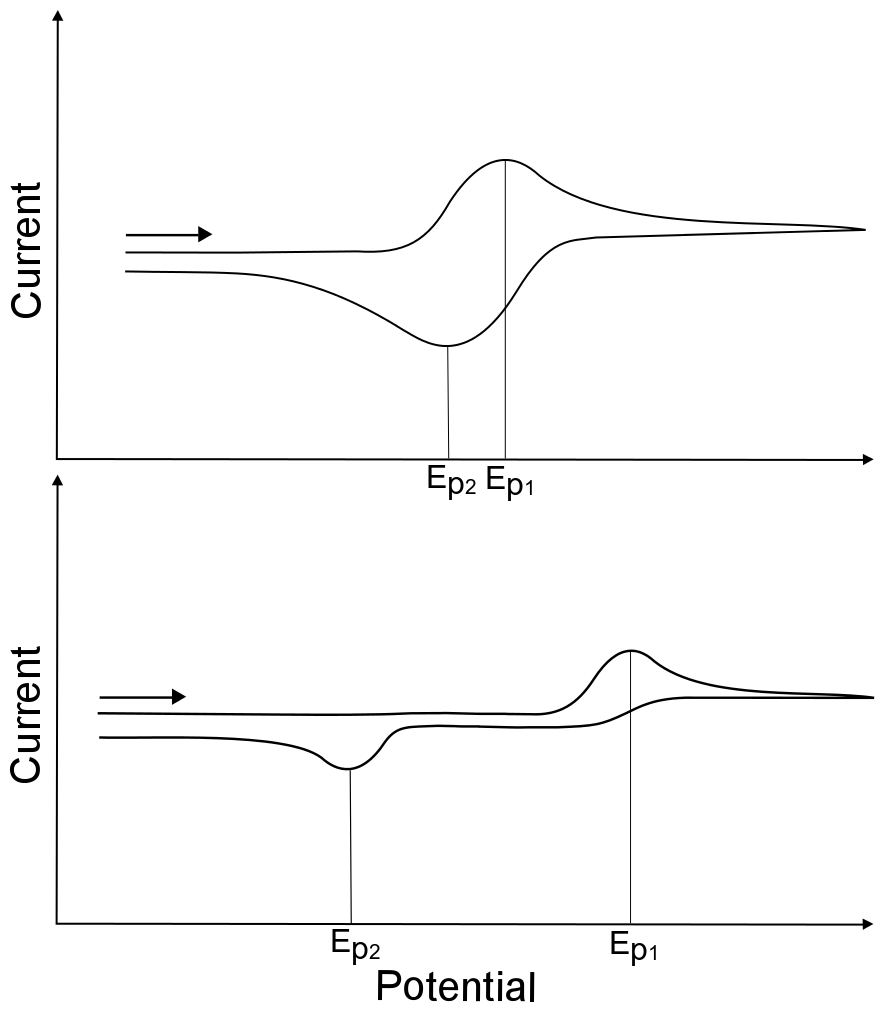Peak Potential (Ep)
The potential at which the current reaches a maximum (or minimum) during an electron transfer event is referred to as the peak potential, or Ep. One can obtain information about such processes such as the rate of electron transfer, ligand binding constants, or the rate determining step of a multistep transformation by measuring how the Ep changes under different conditions.

hover over pic for description
The Ep’s of reversible waves do not change with scan rate, whereas the Ep of an irreversible wave will shift with higher scan rates. While it is occasionally appropriate to describe an irreversible wave with its Ep (at a given ν), a reversible wave should be defined by its E1/2 (next section).
Sometimes, the two peak potentials of a wave are distinguished by referring to the peak that occurs on the negative potential sweep as the “cathodic peak” or Epc, due to the fact that the peak is caused by the reduction of the analyte and reductions are associated with cathodes. Likewise, the peak that occurs on the sweep to positive potentials as the “anodic peak,” or Epa.



Did I earn one of these yet?

is licensed under a Creative Commons Attribution-NonCommercial-ShareAlike 4.0 International License.